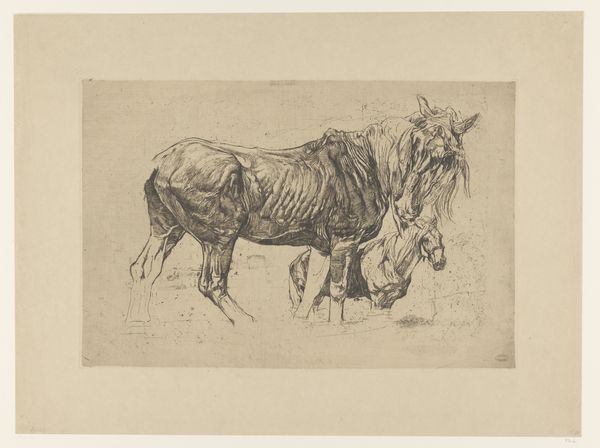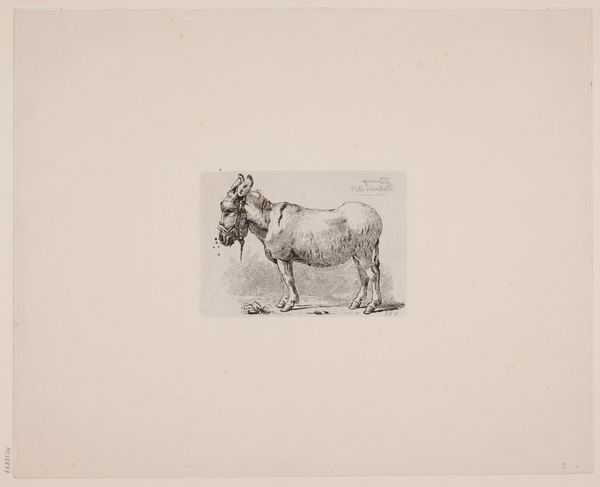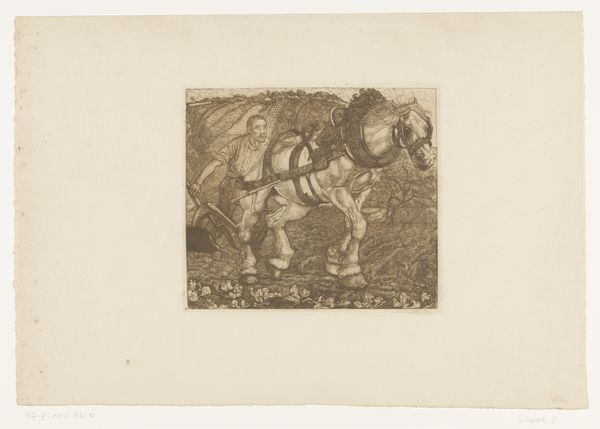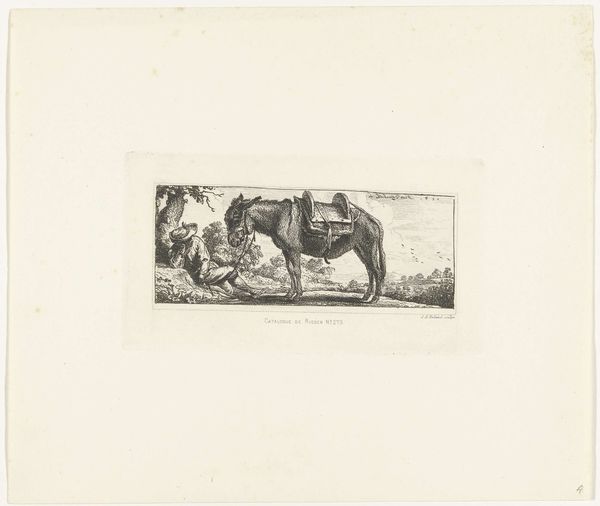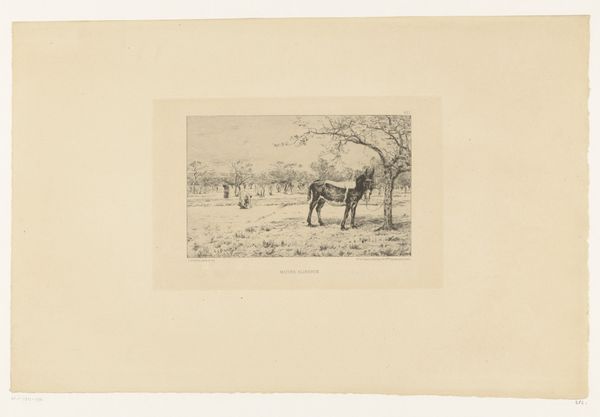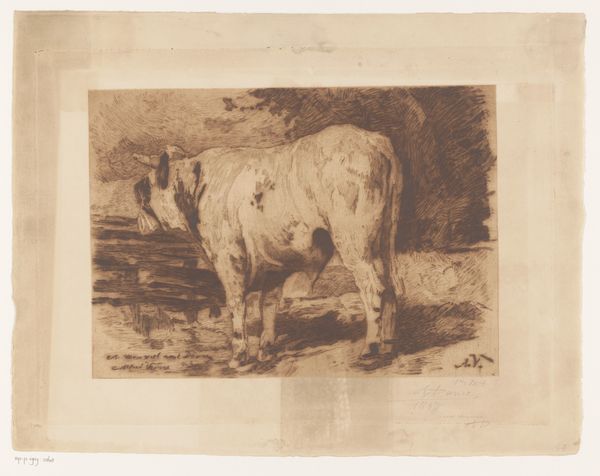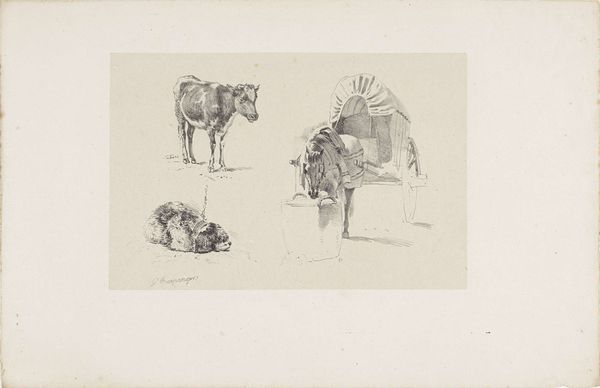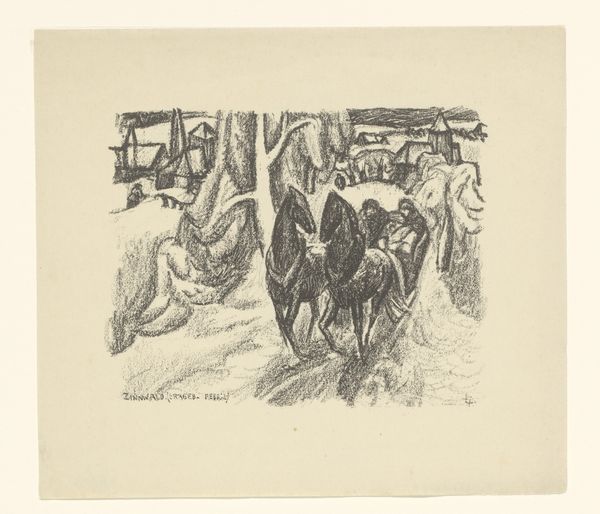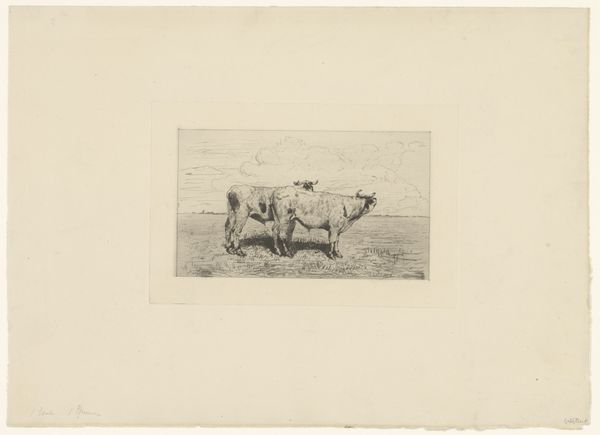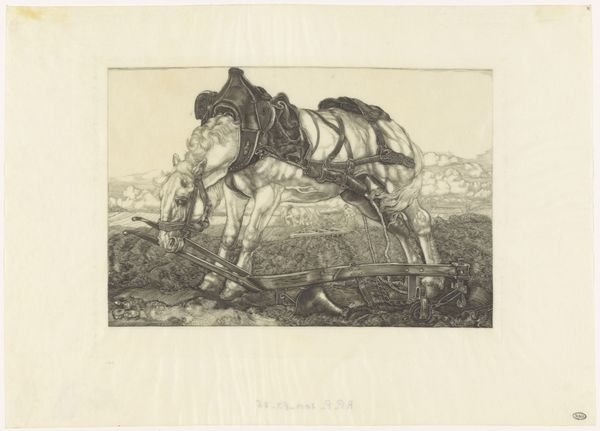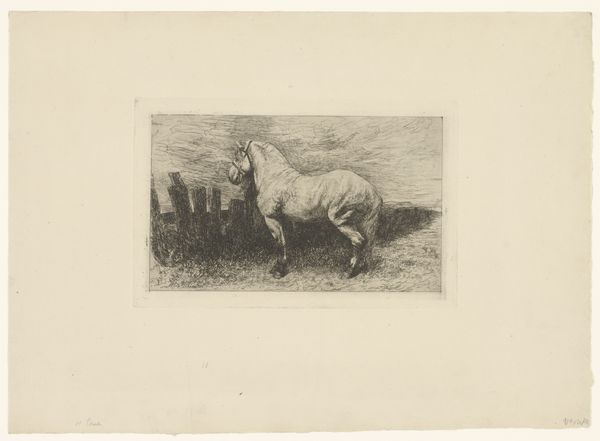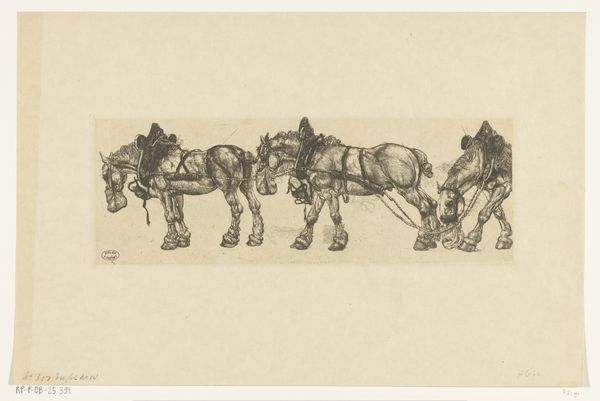
print, etching
#
animal
# print
#
etching
#
landscape
#
horse
#
realism
Dimensions: height 280 mm, width 345 mm
Copyright: Rijks Museum: Open Domain
Curator: Pieter Dupont's 1898 etching, "Etend ploegpaard"—"Eating Plough Horse"—depicts, unsurprisingly, just that. It’s a scene imbued with stillness. Editor: Yes, immediately what strikes me is the weary dignity in this horse's posture. Head bowed, resigned, almost defeated, but still somehow carrying itself with grace, even under the weight of its harness and the blurry field beyond. It reads almost as an indictment of labour itself, especially animal labour. Curator: Beautifully put. It reminds me of a conversation with a former stable hand; they spoke of the profound connection with these creatures, the silent language of care and burden-sharing. I think Dupont captures that. There's a tenderness here, despite the starkness of the lines. I wonder, could this also reflect a sense of his own weariness in the late 19th century? Editor: Absolutely. Consider the broader context: industrialization was rapidly changing society and disrupting agriculture. This etching can be interpreted as a commentary on the exploitation of both human and animal labor within burgeoning capitalist systems. The horse, reduced to a beast of burden, mirrors the plight of the working class during this period. Its weariness is symbolic. Curator: The artist's commitment to Realism is certainly relevant here, too, wouldn't you say? There's nothing romanticized about the subject; it feels honest and lived-in, much like the work of Millet. Though this feels sadder, less celebratory somehow. Editor: I agree, the choice to depict a "work horse" rather than, say, a stallion, says it all. Dupont’s deliberate realism invites a kind of discomfort. The lines of the print become almost brutal, rendering every wrinkle, every strap of the harness, every physical indication of its hard work with acute attention to detail. This elevates it beyond simple portraiture and situates it in dialogue with the wider social realities of the late 1890s. Curator: Thinking of all the fields this horse would have ploughed, the weight it must have carried; this single moment, this scene of sustenance feels immensely important. We may interpret it in terms of broad social themes, as we rightly have, but for a brief time, at least, it gets to rest. Editor: Exactly. And that makes it all the more powerful.
Comments
No comments
Be the first to comment and join the conversation on the ultimate creative platform.

